The Golden Age of Yorkshire Resorts: New book charts Yorkshire's popularity for a summer holiday
If you were asked to name some of the best architecture in Yorkshire, and some of the county’s most historic houses, you’d probably reply with a list that includes Harewood House, Burton Constable, Wentworth Woodhouse and Newby Hall.
They all have at least two things in common, apart from their timeless grandeur - they are all inland, and they were all built by the aristocrats of their day. They also sit in the middle of what would have been considerable estates.
Advertisement
Hide AdAdvertisement
Hide AdBut wealth shifts as the centuries pass. Today it’s in the hands of investment brokers and banks, giants of the entertainment industry and IT moguls.
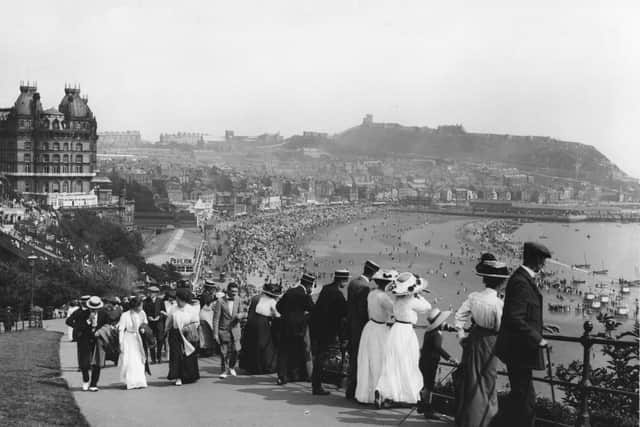

But, as the Georgian era passed into the Victorian, it was held by the industrialists, the men (never women) whose mines delivered the coal that helped build the Empire, whose steel built the ships and the railways, and whose cloth put garments on the backs of the people.
Vast fortunes were made for those canny Yorkshiremen who had a contract to supply the material which became the uniforms of the British armed forces. The demand was never-ending.
Being fabulously wealthy, families such as the Gotts, from Leeds, or the Salts from Bradford, didn’t want to stay adjacent to their factories – their homes, for most of the year, were several miles away from belching factory chimneys.
Advertisement
Hide AdAdvertisement
Hide AdBut they, and many others, set their sights further afield, and they decided to take their lengthy holidays on their native coast. But not – for the most part – in hotels. They wanted something more permanent, and they built their own second homes.
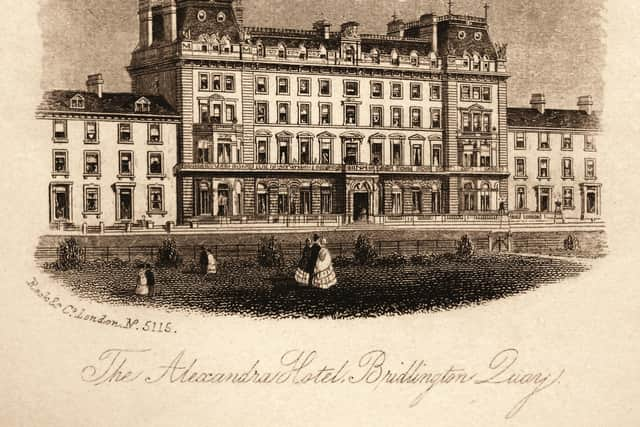

Dr. George Sheeran delves into this forgotten corner of how the other half lived in his new book The Golden Age of Yorkshire Resorts, and it reveals that it wasn’t just the crème de la crème of our own county who wanted to enjoy the bracing air of the East coast by building their own homes, but also visitors like The Duke of Wellington, Sir Robert Peel, and (far further up the social ladder) Germany’s Grand Duke and Duchess of Hesse and the exotically-title Maharajah of Cooch Behar.
Their Graces and the Maharajah were the ones who booked into the new hotels – or rather someone on their staff did. The Hesses were fond of Filey, the Indian rajah was more inclined to Whitby. The Duke of St. Albans, however, favoured Hornsea.
And, to underline the social cachet of the communities, local newspapers published weekly accounts of whom, among the “quality”, was staying where. Today, it would be a little like reading that “Mr. Gary Lineker and his family have taken a villa in Saltburn for the summer, and are expected to stay for several weeks”.
Advertisement
Hide AdAdvertisement
Hide AdKnowing where these celebrated personages were staying allowed others of social rank to call on them – or, at least, leave their cards, in the hope that their betters would deign to give them the opportunity of an audience. One clergyman breathlessly noted in his diaries that, on one days alone, he had seen several MPs, The Archbishop of York, and a Roman Catholic Cardinal. They had different views on “celebrities” back then.
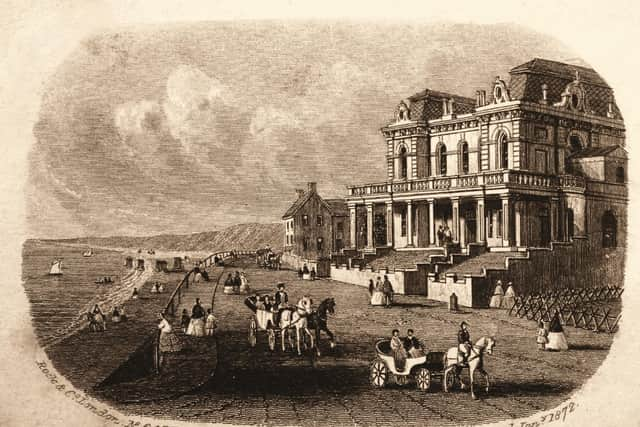

Members of the Royal family never ever built a holiday home on the coast. But several of them stayed with acquaintances who did. The closest the county came to having royals in residence was when South Crecent Villa in Filey (built in 1856, and now the popular White Lodge Hotel) was sold in 1935, and The Earl of Harewood considered buying it on behalf of his wife, Princess Mary, the Princess Royal. He didn’t proceed with the purchase, and it then became today’s hotel.
It had been the home for many years of the celebrated actress Dame Madge Kendall, and she entertained the stars of the time, including, it is said, Noel Coward. As a private residence South Crescent Villa was (when first built) a typical example of the seaside “home away from home” of the well-heeled. It had fourteen rooms, its own wine cellar, stables, greenhouse, coach house and lawn tennis courts. And, then as now, an unparalleled sea view.
Dr. Sheeran (who himself lives at Hummanby) is an expert on urban and architectural history, and Honorary Visiting Post-Doctoral Fellow at the University of Bradford and also a Trustee of the People, Landscapes and Cultural Environments Research Centre (PLACE, for short) which is supported by York St. John University. George (74) has published widely, but this new book was spurred by his wanting to know how and why our ancestors “the ones with oodles of money” picked the Yorkshire coast for their holidays.
Advertisement
Hide AdAdvertisement
Hide AdGolden Age is a book of triumphs in architecture, many of which survive today, and of some strange disasters and many mis-placed judgements, and it is also revealing about how everyone, in Victorian and Edwardian society in general “knew their place”.
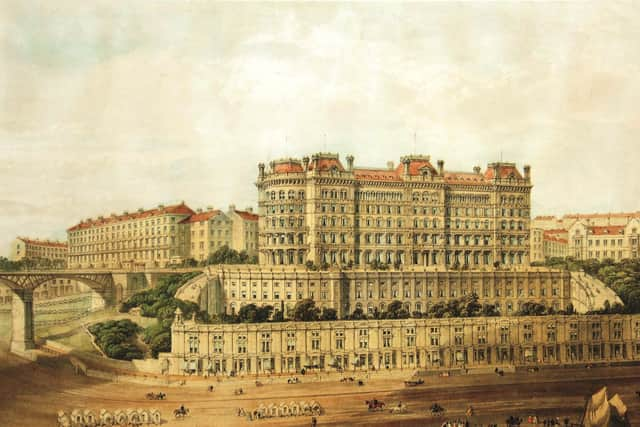

The Laughton family, for example, owned three major hotels in Scarborough, and were eminent citizens of the town. But they were “in trade”, running businesses, so they weren’t at the very top of the social tree.
One of the sons of the family, Charles, became a noted film star and director. “I can’t help wondering, “says George, “how they would have reacted if they’d known that one of the gems in their crown, the Holbeck, would have slid into the sea in the 1990’s, the terrible victim of coastal erosion? I remember watching it finally disappear down the cliff one evening, with the late Richard Whitley, from ITV Calendar, doing a live report to camera as it went?”
The trigger for the book, says George, was realising that quite a lot had been written about the mass migration of the general public to resorts – from Redcar in the North to Withernsea in the South – but nothing on the fine residences and hotels and attractions.
Advertisement
Hide AdAdvertisement
Hide AdAs well as the buildings that served them, such as the new churches which found themselves in demand for the worship of upper-class congregations. He went to both business and family archives, to newspapers, legal documents and to many more sources, and it took a full two years of research and then writing.
What emerged is a fascinating architectural and social history as well as a glimpse into urban development in a past age.
Speculators in real estate were everywhere – and none more so than those connected with the development of the railway network. George Hudson, the “Railway King”, decided to give Whitby its famous Royal Crecent.
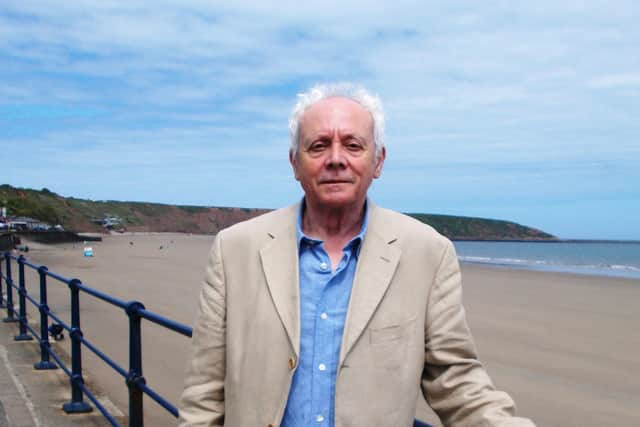

And he nearly succeeded, except that his empire came crashing down, Hudson was disgraced, and only half of the architecturally out of register Crecent was built. Bridlington too had crescent issues – theirs is a curious amalgamation of designs and styles. Today, it is in a designated regeneration area.
Advertisement
Hide AdAdvertisement
Hide AdOne of the “lost treasures”, says George, is the Scarborough Aquarium which was to have been built in the North Bay on a vast nine-acre site. Money was to be invested in the splendidly titled Scarborough Sub-Tramway, Aquarium and Improvement Company Ltd, but the whole idea seems to have fizzled out, only to be revived by The Aquarium Company Scarborough, Ltd, and they managed to build it on three acres, but this time on land leased from the Council, and in South Bay.
It had no less than 125,000 square feet of accommodation, with scores of tanks for sea creatures (including the rather less than exotic haddock) and it cost £100,000 to build. The interior was sumptuous, and in part influenced by the Red Fort in Delhi. It was never a financial success, and ended its life in 1968 as a “fun city”.
George remarks that “this was the greatest loss of Victorian architecture and engineering on the Yorkshire coast. It’s a car park today, and when I see the photograph of that, and the designs of what it had been, I really want to weep. It was something quite remarkable”.
Some of the architects were remarkable as well. William Baldwin Stewart – who designed The Royal Opera House in Scarborough in the 1870s seemed to shift quite easily from working on Broadway in New York City, then to Yorkshire, and finally over to San Diego in California. “A diverse career indeed”, laughs George.
Advertisement
Hide AdAdvertisement
Hide AdHotels have come, and (as the Holbeck) hotels have gone, and many had their own little quirks – The Zetland, in Saltburn, for example, offered guests their own spur branch line into a special portico, so that they didn’t have to worry about transferring from transport to accommodation.
One of the buildings that he wishes was still standing, says George, is the glorious Alexandra Hotel in Bridlington, “which looks so elegant that you could believe that it had been lifted from somewhere the stylish centre of Paris, and rebuilt in Yorkshire. To call the design ‘accomplished’ is an understatement”.
For many, our coastline is defined by what was once the Queen of the coast, Scarborough’s Grand Hotel. “You either love it, or you hate it”, says George.
“They proclaimed when it was first built that it was ‘the largest hotel in Europe’. Sorry to shatter the myth, but it never was. Sand neither is it a ‘calendar’ building – 365 rooms, twelve staircases, and so on. It isn’t, and it never was. But it is still a striking construction, and demonstrates the confidence and skills of those who built it.
Advertisement
Hide AdAdvertisement
Hide Ad"My advice to anyone wanting to discover our coastal history in terms of the houses and the public buildings? It’s always the same – look around you, and, above all, look up! You’ll be surprised at what history survives above the ground floor level!”
The Golden Age of Yorkshire Resorts, 1800 – 1914, Amberley Publishing, £15.99. A talk on the book, and a signing by the author, at the Woodend Gallery in Scarborough, July 1 at 11.00am.